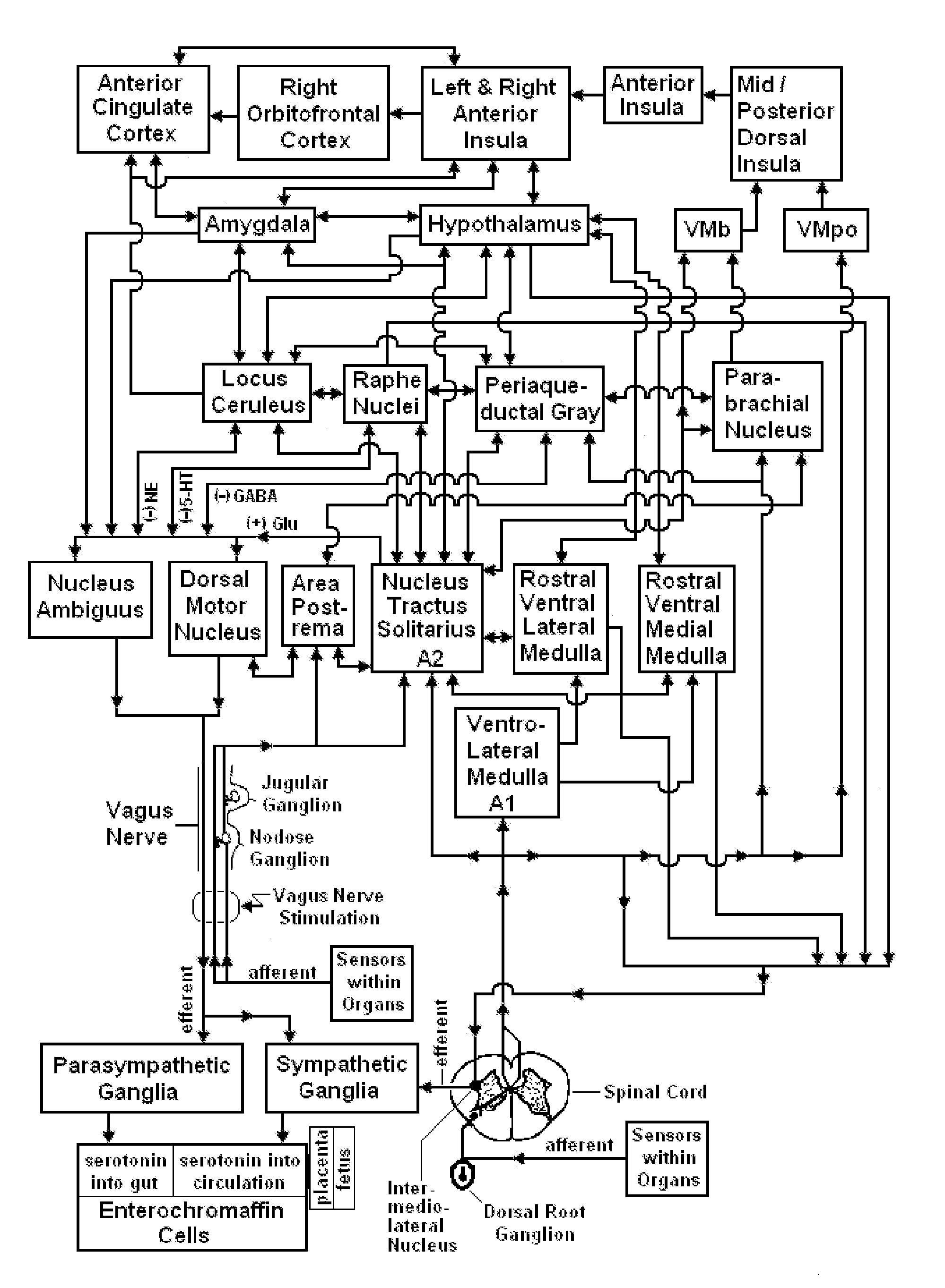Non-invasive magnetic or electrical nerve stimulation to treat or prevent autism spectrum disorders and other disorders of psychological development
- Summary
- Abstract
- Description
- Claims
- Application Information
AI Technical Summary
Benefits of technology
Problems solved by technology
Method used
Image
Examples
Embodiment Construction
[0086]In one embodiment of the invention, a time-varying magnetic field, originating and confined to the outside of a patient, generates an electromagnetic field and / or induces eddy currents within tissue of the patient. In another embodiment, electrodes applied to the skin of the patient generate currents within the tissue of the patient. An objective of the invention is to produce and apply the electrical impulses so as to interact with the signals of one or more nerves, in order to achieve the therapeutic result of altering a disorder of psychological development, more particularly a pervasive developmental disorder, and even more particularly, the disorder of autism. In the disclosure that follows, the developmental condition is usually referred to as autism, but with the understanding that unless otherwise indicated, the discussion could apply to other conditions of psychological development as well [Geraldine DAWSON and Karen Toth. Autism spectrum disorders. Chapter 8 (pp. 317...
PUM
 Login to View More
Login to View More Abstract
Description
Claims
Application Information
 Login to View More
Login to View More - R&D
- Intellectual Property
- Life Sciences
- Materials
- Tech Scout
- Unparalleled Data Quality
- Higher Quality Content
- 60% Fewer Hallucinations
Browse by: Latest US Patents, China's latest patents, Technical Efficacy Thesaurus, Application Domain, Technology Topic, Popular Technical Reports.
© 2025 PatSnap. All rights reserved.Legal|Privacy policy|Modern Slavery Act Transparency Statement|Sitemap|About US| Contact US: help@patsnap.com



